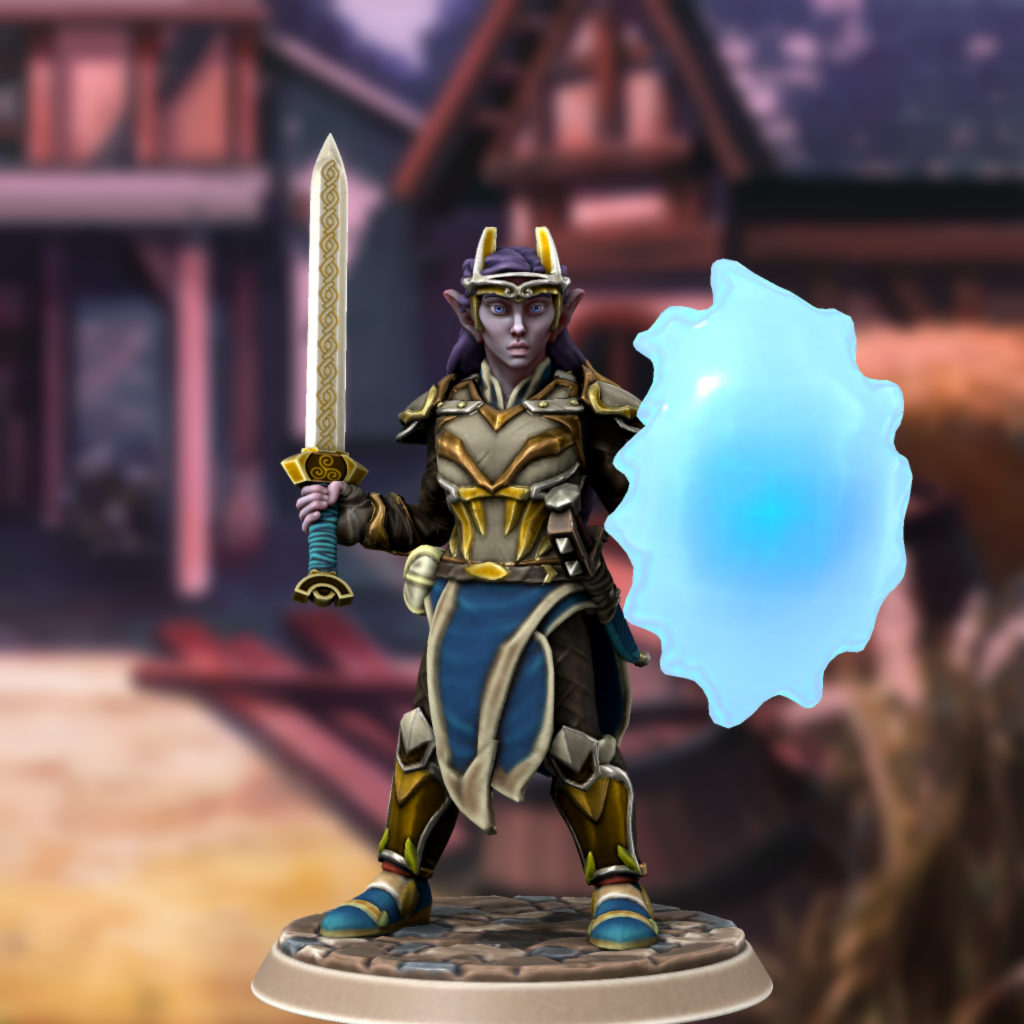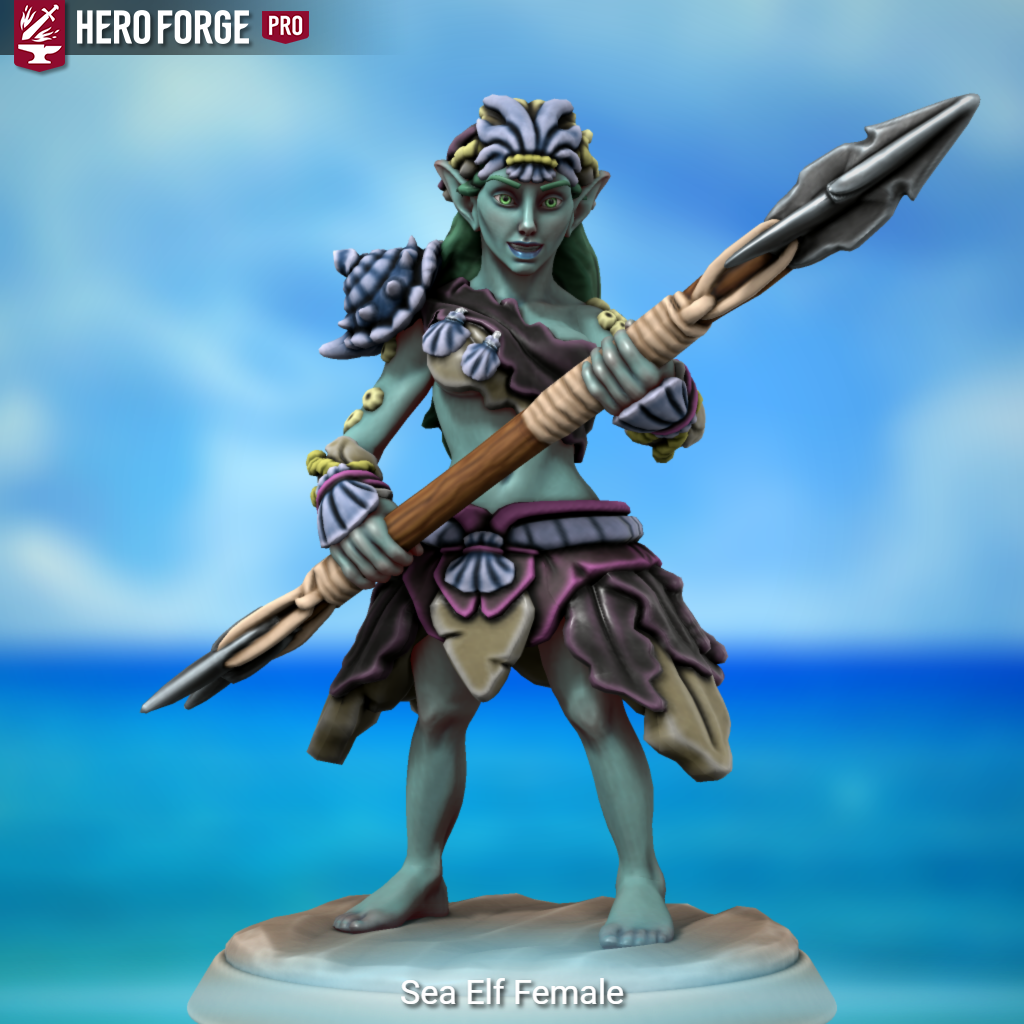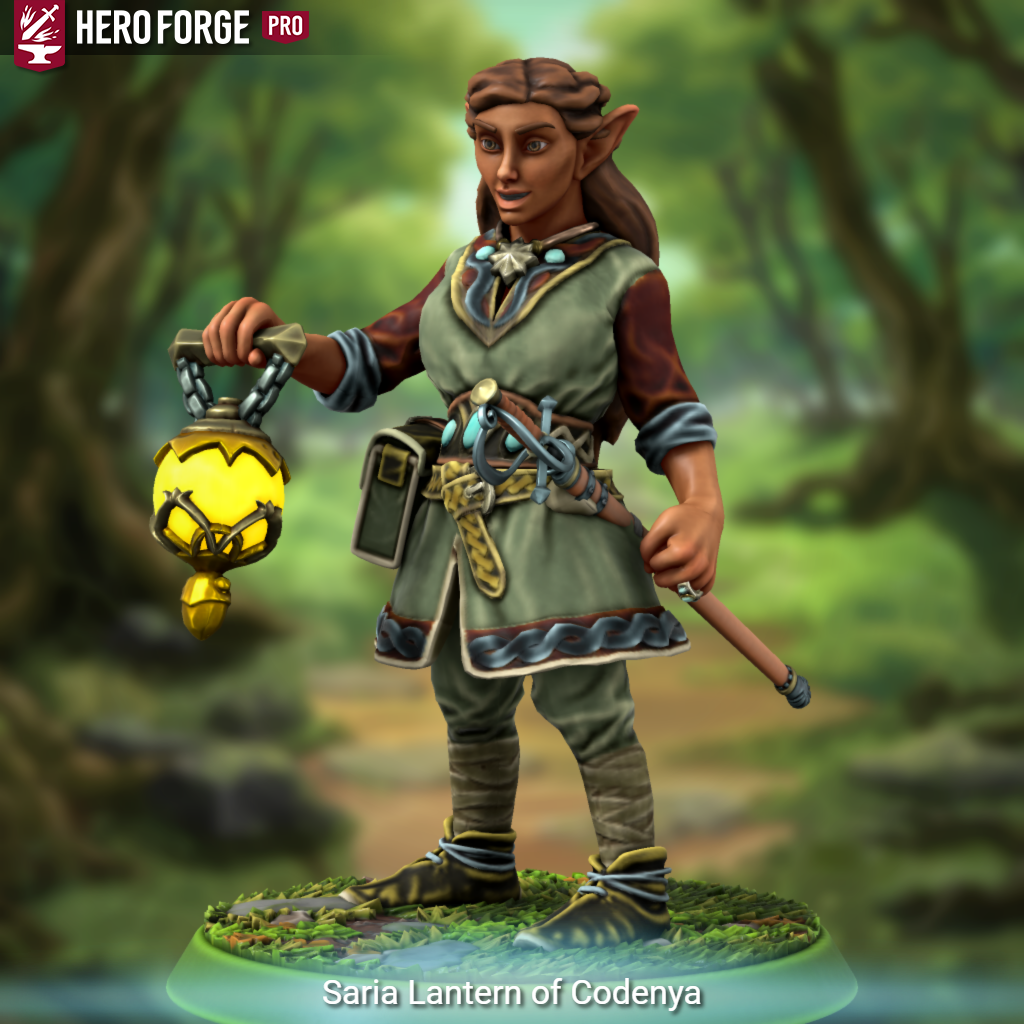So you want to play an elf?
If you want the LORE for Scarterran elves, click this link
Core Character Creation Rules for Elf Characters
Show spoiler
Elves have the same 1 to 5 dot attribute spread that humans have.
Graceful: Elves receive -1 difficulty bonus all non-magical rolls involving Dexterity
Keen Senses: Elves receive -1 difficulty bonus all rolls involving Alertness
Frail: One fewer bruised health level than Humans. +1 difficulty penalty to Stamina rolls used as saving throws
-4 freebie points
Nearly all elves speak Elven as their native tongue though an elf raised by non-elves might speak something different.
Basic Overview of Elf abilities by the Mechanics
Note that Scarterran elves differ a bit from D&D elves, Tolkien elves, and Warhammer elves though they are similar. Unlike D&D elves, Scarterran elves have no protections against charm or sleep spells. They have no magical defenses that humans do not have, in fact, they get a penalty when resisting magic attacks with their Stamina. There aren't many magical attacks in Scarterra d10 that are resisted by Stamina but the ones that do exist are often nasty. They do not have dark vision like 5th edition elves or low light vision like 3rd edition elves. Scarterran elves do have enhanced senses relative to humans and receive a -1 difficulty bonus on all Alertness, and while Scarterran elves cannot see in the dark, the Alertness bonus is quite powerful. Scarterran elves sleep like everyone else, they don't "trance". Scarterran elves have a -1 difficulty bonus on all non-magical Dexterity and this is a very powerful bonus given how important Dexterity is in Scarterra D10. On the downside, elves start out with one fewer health level and get a penalty on Stamina based saving throws (but not Stamina based fatigue checks). On the whole, this still makes elves slightly better fighters than humans most of the time.Overview of Roleplaying Elves
Scarterran elves are pretty similar to Scarterran humans. Dare I say, in elves and humans are more similar to each other in Scarterra than they are in Middle Earth, Warhammer Fantasy, Athas, Krynn, or Forgotten Realms. While humans are the majority population of Scarterra, elves are the second largest mortal demographic more than dwarves and gnomes combined who are vying for the number three spot. So what makes an elf an elf. Grace, dignity, and patience. To a lesser extant, stoicism and pride. Also, elves transition between "fast time" and "slow time", whereas most other races live almost entirely in "fast time". Check out the article Psychological and Cultural Effects of Long Life Spans for details. While technically I wrote the article to cover all mortal races in Scarterra, and its core I am mostly comparing humans and elves.Scarterran Elf Subcultures
Scarterra has four distinct elf nations with an associated elf ethnicity, grey elves, dark elves, wood elves, and sea elves. They are similar to the elf subraces of D&D and they are similar to the subraces of Warhammer fantasy (if you leave out sea elves and understand that WHF High Elves ~ Scarterran grey elves), but they are different enough that you should read the associated articles if you want to try o playing one of these groups. The four Scarterran elf subcultures are the result of four different strategies elf groups used to survive the Second Unmaking which led to them rebuilding their cultures from the ground up in four different ways. For the most part, the Scarterran elf cultures, while they are culturally separate from each other, they are physiologically near identical. Most Scarterran humans have trouble telling wood elves apart from grey elves and dark elves unless the elves are wearing their national colors. Scarterran sea elves do stand apart from their cousins because they manifest Water ethnic traits almost exclusively and most other elves manifest two or three co-dominant elemental traits though you might fight a rare few extra salty grey elves or dark elves that have enough watery traits to pass as a sea elf...at least physically. So you want to play a Wood Elf? Scarterran wood elves come from the nation of the land of Codenya. They are loosely based on the Tolkien Elves of Lorien and Mirkwood and the Warhammer Fantasy Wood Elf army.The wood elves ancestors survived the Second Unmaking by hiding in the forests and making alliances with various woodland dwelling creatures and groups and the elves kept their alliances intact long after the Unmaking was over. The wood elf Nation of Codenya includes forest gnomes, Codenya kalazotz, Codenya satyrs, and druss elves among even more exotic races. Wood elves and their allies blur the line between "barbarian" and "civilized" lifestyles with their semi-nomadic semi-agrarian lifestyle detailed in the article How do most wood elves feed themselves?.
So you want to play a grey elf?
Scarterran grey elves come from Elven Empire which has a wide ranging territory but is centered on the Island of Lunatus. The Elven Empire is loosely based on the High Elf army of Warhammer Fantasy and the real world British Empire. The Elven Empire has a great many non-elven subjects (especially in their far flung colonies) and their noble class is all elves. That said, while most Elven Empire nobles are grey elves, most grey elves are not nobles though they still informally hold more status than most non-elves.The grey elves' ancestors survived the Second Unmaking by virtue of geography. The Island of Lunatus is near the equator, far away from the poles where the Void Demons entered and was relatively easy to defend. While Lunatus suffered casualties from multiple demon invasions, they ultimately avoiding having their infrastructure destroyed outright and enough elves survived that their population rebounded in the early centuries of Third Age allowing them to sail out and establish many colonies. They lost of lot of colonies as some of their human colonies rebelled for independence since then, but the Elven Empire is still a political force to be reckoned with.
So you want to play a dark elf?

Kahdisterian Greymoria Symbol by Me using Nightcafe
Scarterran dark elves come from the nation of land of Kahdisteria occupying the eastern coast of East Colassia, they are loosely based on the Dark Elf army of Warhammer Fantasy and have some vague similarities with the Drow of D&D at least as far as they both have a slave based economy and worship an evil goddess of magic and darkness though they do not have ebony skin, live in an oppressive matriarchy, or shun the sunlight.
The dark elves' ancestors survived the Second Unmaking by making pacts with the goddess Greymoria and alliances with some of Greymoria's monstrous children, cultural and religious ties they maintain today.
So you want to play a sea elf?
Sea elves are the proverbial redheaded step children of Scarterra's elves. Or I guess in this case they are the blue-headed step children. Unlike D&D sea elves, they don't have gills and cannot survive underwater. Scarterran sea elves are terrestrial creatures that happen to live near the sea and upon the sea but not in the sea.
They survived the Second Unmaking by making alliances with various denizens of Scaraqua. They worship the the Nine by their their Scaraquan names, especially the Seeyirah.
This means that in order to roleplay a sea elf well, you are going to have to read up on a lot of Scaraquan articles in addition to reading up on the lore for your character abilities and whereever the actual RPG campaign is set. That is a lot of reading, and a casual player will probably want to do this.
Elves and the basic character archetypes
Elves are similar enough to humans that the basic "So you want to play a _____" articles don't need much adjustment. So you want to play a warrior who is also an elf?As mentioned before, the elf bonus to Dexterity is extremely useful and more than offsets the handicap of impaired Stamina and starting with one fewer health level. On average an elf warrior is going to miss less often and be hit less often than a human warrior with the same combat traits.
Elf warriors are pragmatic and you can justify any fighting style you want for your character and use any weapons you find appealing, that said their are some cultural tendencies.
Most wood elf warriors tend to favor long bows, or "war bows" as they are often called. Melee warriors tend to favor weapon and shield combos, rarely using two handed weapons.
When at actual war, wood elf warriors often focus on stealth ambushes, and hit and run tactics versus brute force or force of numbers. Wood elves rarely focus on mounted combat.
For self-defense weapons, wood elves tend to favor arming swords, quarterstaffs, hand axes, and sometimes short bows.
Grey elf warrior culture is based largely on ship-to-ship combat. That means polearms and other long weapons that are not convenient to use in limited spaces are not favored. Melee warriors tend to favor one-handed weapons paired with shields, often buckler shields. Grey elves are equally likely to use bows or crossbows, many use both preferring crossbows during naval engagements and long bows while on land.
In terms of warfare, grey elves favor well disciplined formations and combined arms maneuvers. They are the only elf culture in Scarterra that regularly uses cavalry soldiers though they are less reliant on cavalry than most human armies.
For self-defense weapons, grey elves tend to favor rapiers, parrying daggers, arming swords, light crossbows, and sometimes throwing daggers.

Kahdisterian Greymoria Symbol by Me using Nightcafe
Dark elf warrior culture is shaped by magic users. Many casters favor smaller two handed weapons like long swords and falchions. So much so, that even non-caster dark elves have a slight training bias towards using two handed weapons that are relatively easy to parry with in lieu of fighting with a one-handed weapon and a shield. Dark elves also have a maritime culture almost as strong as the grey elves causing them to favor the weapons of sailors similar to what grey elves use. Dark elves are equally likely to use bows or crossbows.
The recent Great East Colassian War forced the dark elves to adapt. They used a mix of small unit scale hit-and-run attacks and large unit formations and combined arms maneuvers.
For self defense weapons, dark elves tend to favor arming swords, daggers, and sometimes light crossbows. Slave overseers tend to rely on clubs and whips, but they often carry bladed weapons as a last resort and for the intimidation factor.
So you want to play a Rogue/Expert who is also an elf?
Elves have long life spans and are generally literate. They are likely to absorb a lot of reading and oral lore by the time they are adults. Given the natures of slow time, arguably elves have a lower attention span than most younger races so they don't accumulate as much subject lore expertise as you would expect given their long years. Elf experts tend to be biased towards jack of all trades sorts as opposed to unparalleled specialists.
Elves are no less prone to criminality and low cunning than humans are. With their great dexterity, elves make great pickpockets, cat burglars, dungeon delvers, and trap diffusers. Given the elf bias towards dignity and grace, even criminally minded elves often have standards. Elf thieves are much more likely to carefully plan and carry out elaborate heists and large scams with large payoffs as opposed to simply robbing or fleecing everyone in sight like some other stereotypical rogue types.
So you want to play a mage who is also an elf?
Elf mages aren't really that different from non-elf mages on the whole. The Elven Empire culturally pushes hermetic wizardry, especially classical hermetic wizardry, as the most powerful and honorable form of arcane magic. Very few grey elf mages are not hermetics, and if they are not hermetic mages they are probably in the lower tier of grey elf society.Kahdisteria values magical diversity, you can find a subculture of almost every mage variant among dark elves apart from Folk Magicians who they are somewhat prejudiced against as being inferior mages. Greymoria Warlocks are the plurality with hermetics nipping at their heels for the number two spot. Dark elves have the largest rune casting wizardry culture of any elf group in Scarterra though they are still a minority. They also have a small but generally respected Body Wizardry subculture.
A plurality of wood elf mages practice Aesthetic Hermetic Wizardry with nearly as many classical hermetic wizardry. They are the only elf culture that doesn't habitually shun folk magicians though they don't have a lot of them. They also have a rune casting wizardry that while small, is still larger than most other non-dwarves. They have a few body wizards too.
So you want to play a divine magic caster who is also an elf?
Khemra is the state religion of the Elven Empire but Hallisan and Phidas have a high place in society so most highborn or otherwise respectable grey elf theurgists are aligned with one of these three deities. The Elven Empire priesthoods of Hallisan and Phidas often butt heads with the greater priesthoods of these gods as the grey elf priests refuse to submit to the authority of the Guardians' and Masks' global hierarchies.
Grey elf theurgists of Mera, Korus, and Zarthus are part of the Elven Empire but they have to rub shoulders with humans more often and may be the minority race in their own religious orders.
The wood elves worship all of the Nine and no deity's worship is restricted or banned in Codenya though their priesthoods for Maylar, Greymoria, Khemra, and Hallisan are very small.
The Codenya priesthoods of Zarthus and Korus are large and influential. The priesthoods of Mera and Nami are of middling size and influence.
Within Codenya, priesthoods do not discriminate and wood elf priests and theurgists have no more or less status than those of their woodland allies. Outside Codenya, Codenyan priesthoods are pretty insular and they almost never formerly mix and mingle with non-elven non-Codenyan branches of their priesthoods. The two exceptions are wood elves in Korus' Stewards and the Cult of the Compact which while separate on paper, maintain friendly formal ties with their spiriual kin outside the forests of Codenya..










Comments